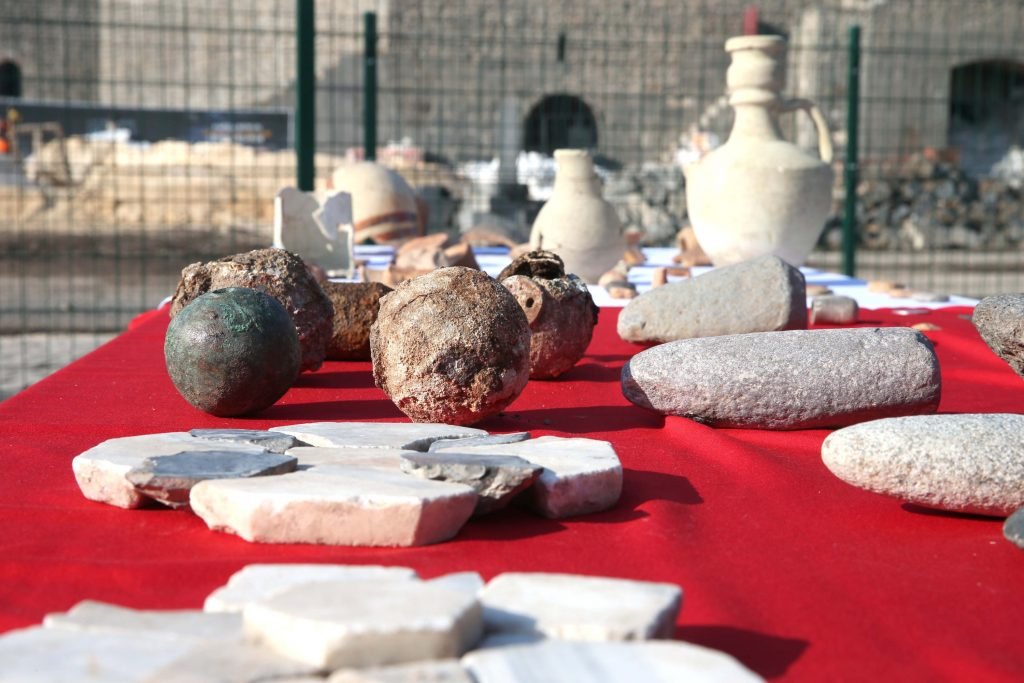The Ottoman Empire’s Historical Significance
The Ottoman Empire, which lasted for more than six centuries, left an indelible mark on the world. Its rise to power, conquests, cultural legacy, and influence on modern Turkey and the Middle East have shaped the course of history. From a small kingdom, the Ottoman Empire expanded its territory, conquered Constantinople, and reached its pinnacle under the rule of Suleiman the Magnificent. This article explores key milestones that define the legacy of the Ottoman Empire.

Rise to Power: From Small Kingdom to Empire
In the late 13th century, a small Anatolian kingdom emerged under the leadership of Osman I, who laid the foundation for what would become the Ottoman Empire. Through strategic marriages, alliances, and military campaigns, the Ottomans gradually expanded their territory, absorbing other Turkic tribes and weakening neighboring Byzantine holdings.

Conquest of Constantinople: A Turning Point
One of the Ottoman Empire’s most defining moments came in 1453 when Sultan Mehmed II successfully captured Constantinople, the capital of the Byzantine Empire. This conquest marked the end of the Byzantine Empire and established the Ottomans as the dominant power in the region. Constantinople, renamed Istanbul, became the new capital of the Ottoman Empire and a symbol of its might.
The fall of Constantinople in 1453 marked a significant turning point in the history of the world. This ancient city, once the glorious capital of the Byzantine Empire, had withstood numerous sieges throughout its existence, but it ultimately succumbed to the might of the Ottoman Empire. The fall of Constantinople not only marked the end of an era, but it also paved the way for a new chapter in world history. This article will delve into the details of this epic event, exploring its impact on the world both at the time and in the centuries that followed.
The fall of Constantinople had far-reaching consequences that reverberated throughout the world. Firstly, it marked the end of the Byzantine Empire, which had survived for over a thousand years since the fall of the Western Roman Empire. With the capture of Constantinople, the last remnants of this once-great empire were swept away, marking the end of the Middle Ages and the beginning of the Renaissance.
Secondly, the fall of Constantinople had a profound impact on trade and commerce. The city was a vital hub for trade between Europe and Asia, controlling key trade routes such as the Silk Road. With the Ottoman Empire now in control, these routes were disrupted, leading to a shift in global trade patterns. European powers, seeking new routes to Asia, embarked on voyages of exploration, ultimately leading to the Age of Discovery and the colonization of the New World.
Lastly, the fall of Constantinople had significant implications for religion and culture. As the center of Orthodox Christianity, the capture of Constantinople by the Ottoman Empire led to the decline of Christianity in the region. Many Christians were forced to convert to Islam or face persecution. Additionally, the loss of Constantinople led to an influx of Byzantine scholars fleeing to Europe, bringing with them ancient Greek and Roman texts that had been preserved in the city’s libraries. This influx of knowledge played a crucial role in sparking the Renaissance and shaping European intellectual and cultural development.
The fall of Constantinople was an epic event that forever altered the course of history. It marked the end of the Byzantine Empire, reshaped global trade patterns, and brought about profound religious and cultural changes. The significance of this event cannot be overstated, as it set in motion a series of events that would shape the world we know today. The fall of Constantinople serves as a reminder of the power of empires, the fragility of civilizations, and the enduring impact of historical turning points.
Suleiman the Magnificent: The Golden Age
The reign of Suleiman I, commonly known as Suleiman the Magnificent, is considered the golden age of the Ottoman Empire. From 1520 to 1566, Suleiman led military campaigns that expanded Ottoman territories in Europe, Africa, and the Middle East. His reforms, such as the establishment of a centralized bureaucracy and the codification of laws, brought stability and prosperity to the empire.
Suleiman the Magnificent, also known as Suleiman I or Suleiman the Lawgiver, was one of the most prominent rulers of the Ottoman Empire. His reign, which lasted from 1520 to 1566, marked a significant period of prosperity, cultural advancement, and military conquests. Renowned for his military campaigns, legal reforms, and architectural projects, Suleiman’s rule is often referred to as the Golden Age of the Ottoman Empire. Let us delve into this extraordinary era and explore the remarkable legacy left behind by this remarkable ruler.
During Suleiman’s reign, the Ottoman Empire witnessed unprecedented growth and cultural flourishing. His military campaigns expanded the empire’s territories, extending its influence across vast regions of Europe, Asia, and Africa. Suleiman’s most notable conquests included the capture of Belgrade, the Siege of Rhodes, and the successful campaigns against the Safavid Empire in Persia and the Mamluk Sultanate in Egypt. These triumphs not only solidified the empire’s power but also brought diverse cultures, traditions, and ideas together, fostering a period of great intellectual exchange and artistic production.
Suleiman’s rule was characterized by a commitment to justice and legal reform. He enacted a comprehensive legal code known as “Kanuniname,” which aimed to secure the rights and welfare of his subjects. Under this legislation, Suleiman improved the judicial system, established principles of equality, and ensured the protection of religious freedoms. His reforms expanded access to education and promoted the development of Islamic scholarship, resulting in a vibrant intellectual climate that attracted scholars from various fields.
Architecture flourished under Suleiman’s patronage, leaving a lasting impact on the empire’s landscape. The most significant architectural masterpiece of his reign is the magnificent Suleymaniye Mosque in Istanbul. Designed by the renowned architect Sinan, this grand mosque is an exemplary representation of Ottoman architecture, blending Islamic and Byzantine elements. Beyond religious structures, Suleiman also commissioned the construction of public buildings, bridges, and aqueducts, improving the overall infrastructure of the empire. These architectural achievements continue to inspire awe and admiration to this day.
Suleiman the Magnificent was a transformative figure in history, whose reign left an indelible mark on the Ottoman Empire and beyond. His military conquests expanded the empire’s territories, while his legal reforms and architectural projects propelled cultural and intellectual advancements. The Golden Age of Suleiman’s rule witnessed the convergence of diverse cultures and ideas, fostering a period of enlightenment and progress. Today, the legacy of Suleiman the Magnificent serves as a testament to the enduring impact of visionary leaders and the importance of nurturing the arts, education, and justice in building a flourishing society.
Expansion and Control: The Ottoman Empire’s Territory
The Ottoman Empire reached its greatest territorial extent during the 16th and 17th centuries. It stretched from Southeast Europe to the Arabian Peninsula and from the Black Sea to the Mediterranean. The empire controlled key trade routes and strategically important cities, which allowed it to exert influence over both land and sea.
Cultural Legacy: Architecture, Art, and Literature
The Ottoman Empire’s cultural legacy is evident in its magnificent architecture, art, and literature. Ottoman architects designed grand mosques, palaces, and public buildings, blending influences from Byzantine, Persian, and Islamic architecture. Ottoman art and literature flourished, with notable contributions in calligraphy, miniature painting, and poetry.
Legal System: The Influence of Islamic Law
The Ottoman Empire’s legal system was deeply influenced by Islamic law, known as Sharia. It served as the foundation for the empire’s legal code, which encompassed both civil and criminal matters. Islamic judges, known as qadis, applied Sharia principles and ensured justice for the diverse religious and ethnic groups within the empire.
Trade and Economy: The Ottoman Empire’s Wealth
The Ottoman Empire’s wealth was built on a flourishing trade network. It controlled major trade routes connecting Europe, Asia, and Africa, facilitating the exchange of goods and ideas. The empire’s strategic location enabled it to accumulate vast wealth through taxation, custom duties, and monopolies on valuable goods such as silk, spices, and precious metals.
Decline and Fall: Internal Struggles and External Pressure
The decline and eventual fall of the Ottoman Empire can be attributed to a combination of internal struggles and external pressure. In the 17th and 18th centuries, corruption, inefficiency, and succession disputes weakened the empire. Simultaneously, European powers, particularly Russia, Austria, and France, sought to exploit the Ottoman Empire’s weaknesses, further eroding its power.
Impact on the Balkans: Nationalism and Independence Movements
The Ottoman Empire’s rule over the Balkans had a profound impact on the region’s ethnic and national identities. As Ottoman control waned, nationalist movements emerged, fueled by a desire for independence. These movements ultimately led to the dissolution of the empire and the formation of several independent states, including Greece, Bulgaria, Serbia, and Romania, among others.
Legacy in the Middle East: Borders and Ethnic Conflicts
The Ottoman Empire’s influence in the Middle East is still felt today. The empire’s collapse and the subsequent redrawing of borders by Western powers after World War I created the foundation for many of the ethnic and political conflicts that persist in the region. The Kurdish question and the Arab-Israeli conflict, for example, have roots in the Ottoman Empire’s legacy.
The Ottoman Empire’s legacy is multifaceted and far-reaching. Its rise to power, conquest of Constantinople, cultural contributions, and legal system continue to shape the modern world. The empire’s decline and subsequent impact on the Balkans and the Middle East have left lasting effects on national identities and ongoing conflicts. The Ottoman Empire’s influence on modern Turkey, through reforms and the forging of a unique identity, further demonstrates its enduring significance. Understanding the key milestones of the Ottoman Empire is essential to comprehending the complex history and dynamics of the regions it once dominated.



